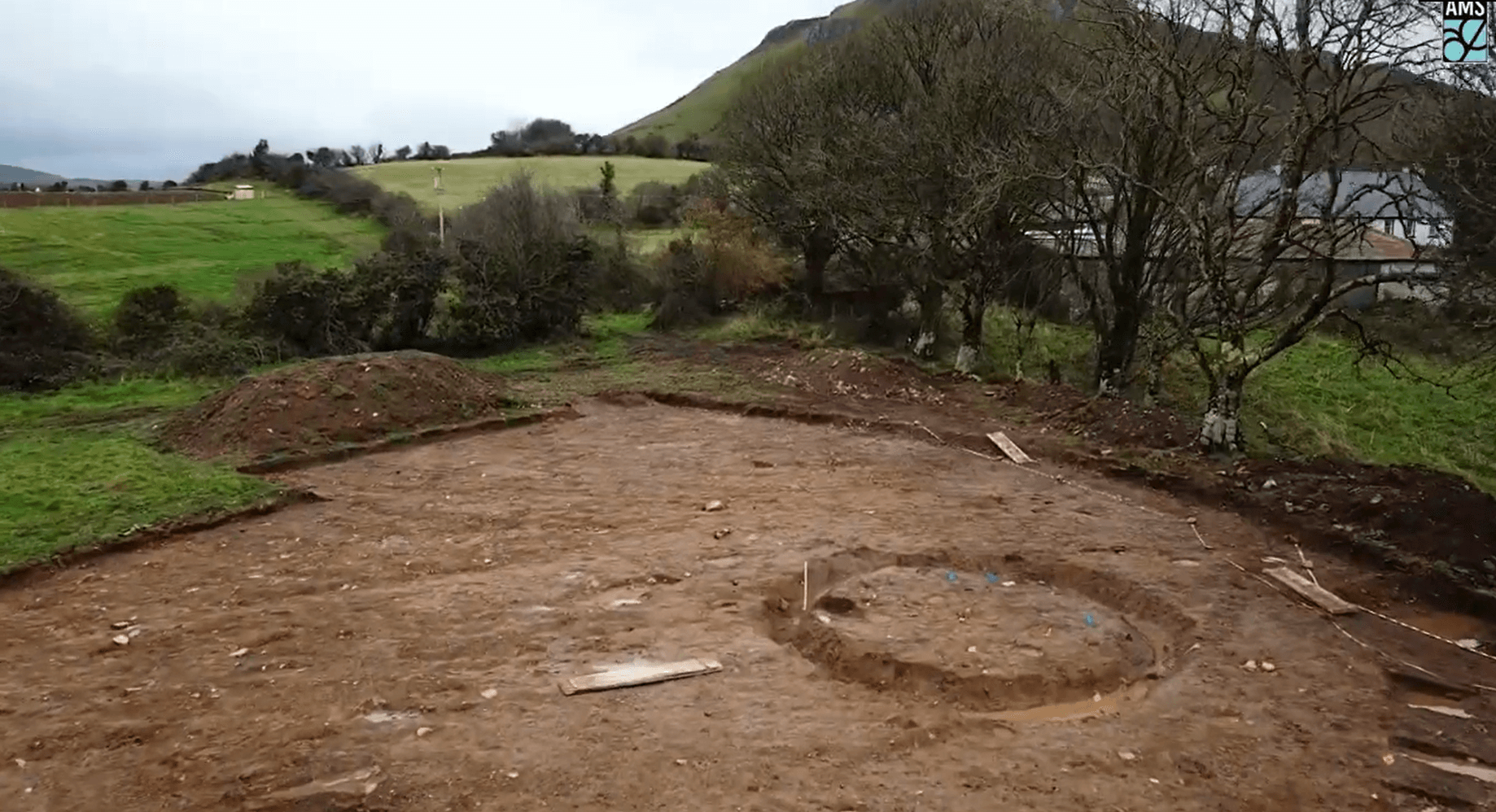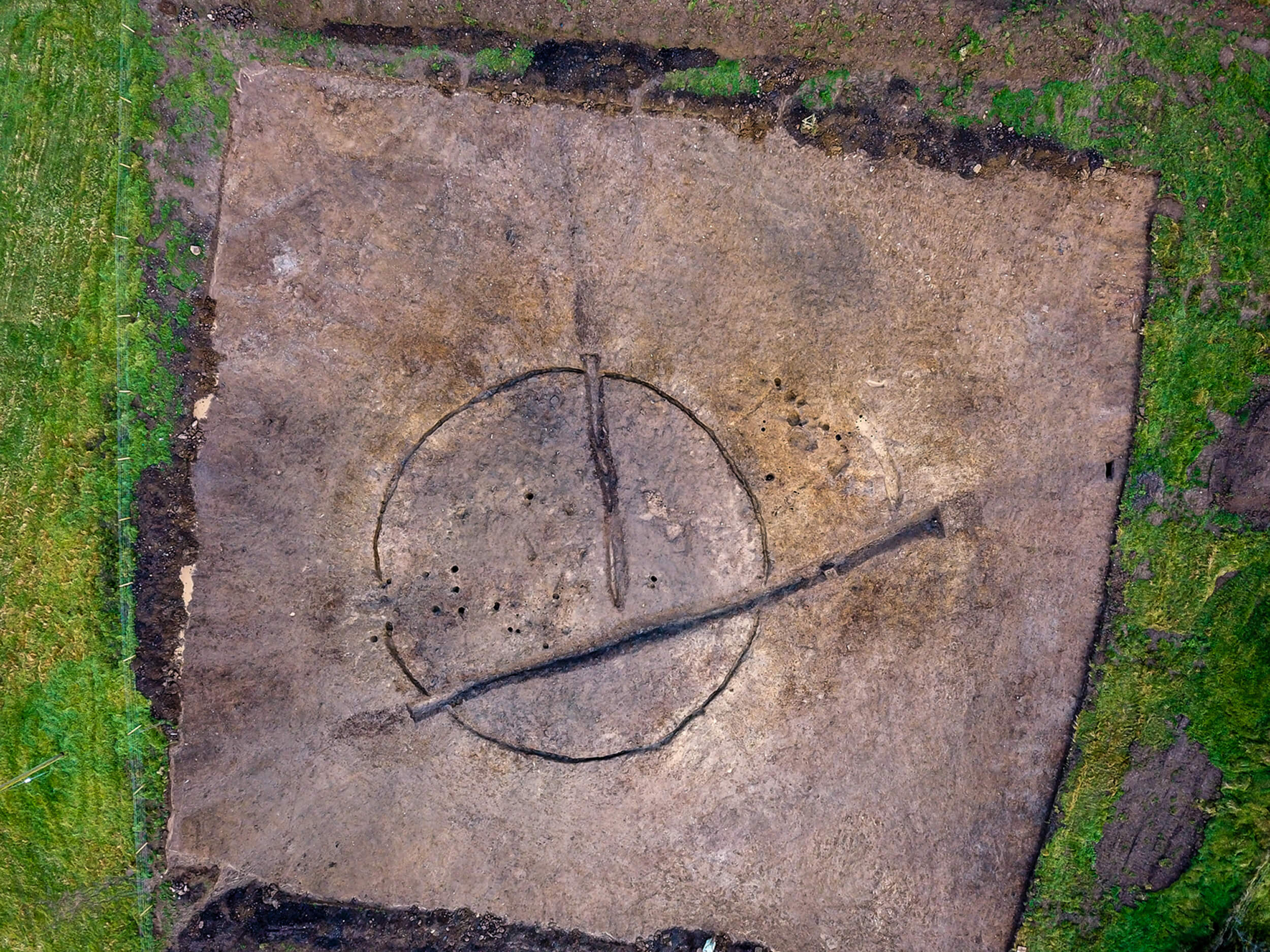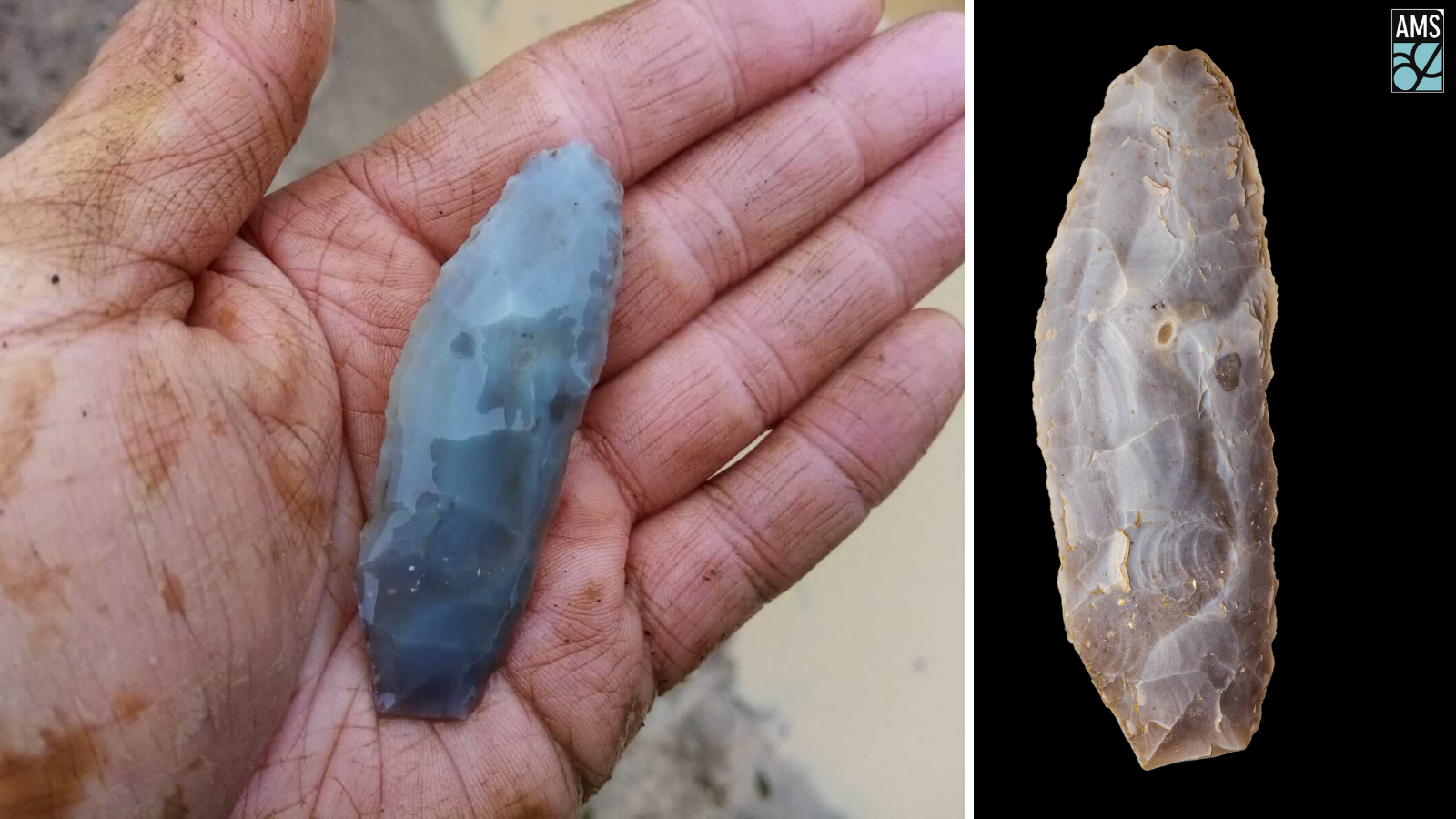Archaeologists working in advance of the proposed upgrade of the N16 Lugatober (Lugnagall to Drumkilsellagh) road development, northeast of Sligo town, have recently unearthed a fascinating range of prehistoric sites, as well as more recent sites of cultural heritage interest.
Archaeological Discoveries
Recent archaeological discoveries along the N16 Lugatober (Lugnagall to Drumkilsellagh) Road Development

The investigation works involved c.9 hectares of geophysical survey and over eleven kilometres of archaeological test trenching, which assisted archaeologists in locating new archaeological sites that were hidden beneath the ground over several millennia. Survey works also included archaeological wade and metal detection surveys of watercourses and built heritage surveys. The investigation and excavation works were conducted between June and December 2020 by Archaeological Management Solutions on behalf of Sligo County Council and involved up to 30 archaeologists working on 15 different sites.
One of the most thrilling discoveries was a large, palisaded (timber fenced) enclosure, prominently located on a rise at the western foot of Cope’s Mountain in the townland of Castlegal. The enclosure may date to the Bronze Age or Iron Age (between 4,500 – 1,500 years ago) and could have been used for religious or ritual ceremonies and other important communal activities. Three prehistoric burial monuments known as ring-ditches were also discovered and excavated nearby (in Castlegal and Lugatober townlands) which reflect a landscape where the dead were buried and revered in prehistoric times. Perhaps the people who built the Castlegal palisade enclosure buried their dead in these burial monuments, a question that can be only be explored when scientific analysis has been completed. Other important finds included a possible prehistoric building and charcoal-production pits, as well as spreads of charcoal and burnt stone that may be the remains of ancient cooking places.
 Aerial view of prehistoric palisade enclosure in Castlegal
[photo courtesy of AMS]
Aerial view of prehistoric palisade enclosure in Castlegal
[photo courtesy of AMS]
Some of the excavated sites uncovered a range of artefacts including flint blades and scrapers for tools, fragments of pottery and blue glass beads. These objects provide evidence of expert craftsmanship, trade networks and even on how people chose to adorn themselves. Other material, such as animal bones, as well as cereal grains and charcoal recovered from soil samples, provide evidence of how they farmed, what they ate and their local environment.
 Flint blade unearthed by archaeologists from a prehistoric timber building in Lugatober townland
[photo courtesy of AMS]
Flint blade unearthed by archaeologists from a prehistoric timber building in Lugatober townland
[photo courtesy of AMS]
Since excavations works concluded at the end of 2020, post excavation works are now underway which will involve scientific analysis of archaeological materials and finds retrieved during the excavations. The results of the post excavation works will no doubt provide new and exciting insights into interpretating these fascinating sites.
Check out the first of our series of exciting video recordings of the archaeological works produced by AMS
Recent archaeological discoveries along the N16 Lugatober (Lugnagall to Drumkilsellagh) Road Development
As part of our ongoing video series highlighting some of the amazing archaeological discoveries on the N16 Lugtaober road project check out our latest video ‘Places for the Living’ where the archaeologists discuss some interesting aspects relating to the sites excavated. This production is the second of three videos produced by AMS.
For further information contact Orlaith Egan TII Project Archaeologist for Sligo County Council - Orlaith.egan@tii.ie
Authors
- Ger Dowling (Senior Archaeologist, Archaeological Management Solutions)
- Orlaith Egan (Archaeologist, Transport Infrastructure Ireland)

